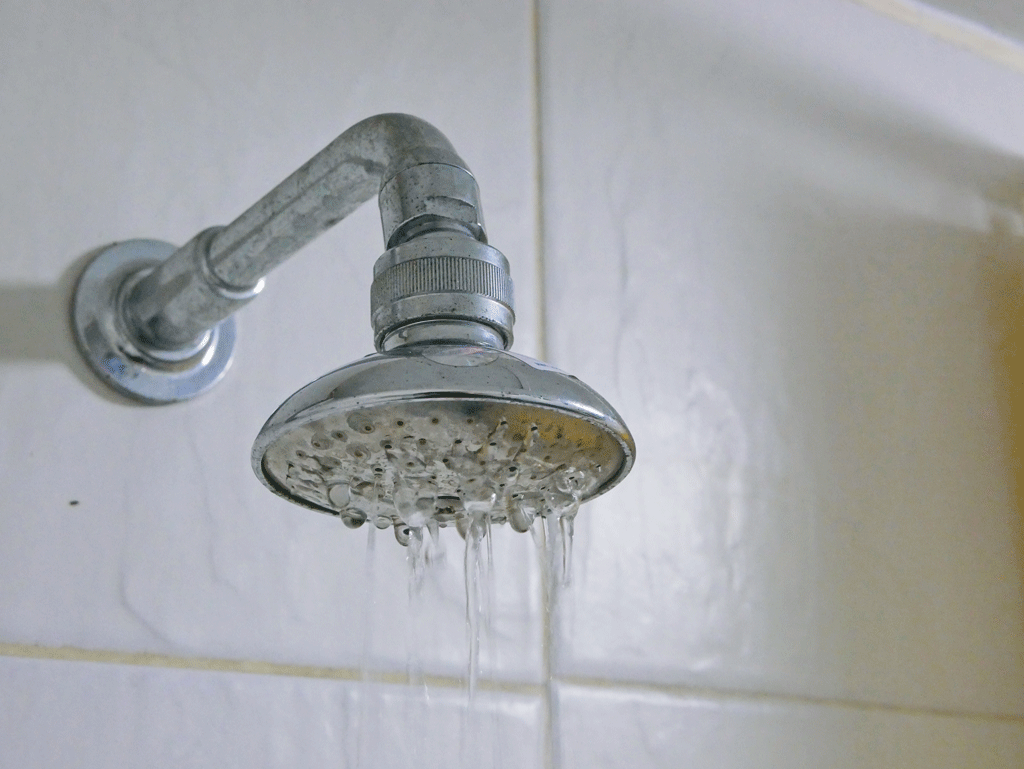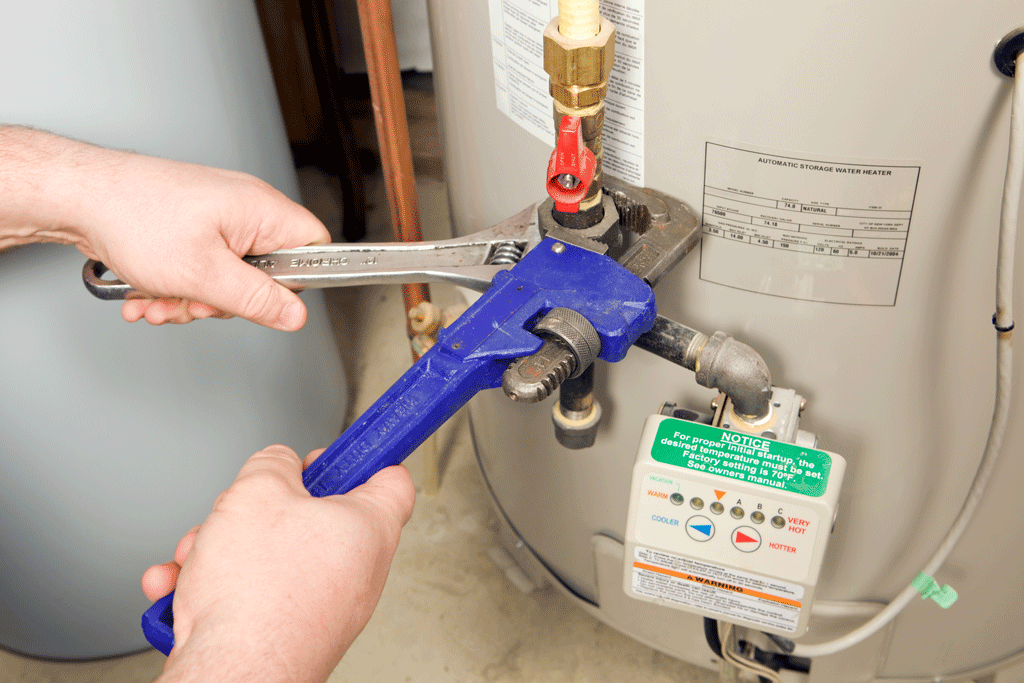Essential Guide to Water Heater Expansion Tanks: Protect Your Home

Essential Guide to Water Heater Expansion Tanks: Protect Your Home
Have you ever heard a strange banging noise coming from your water heater and wondered what it could be?
Or perhaps you’ve noticed that your water pressure isn’t as consistent as it used to be. These issues might not just be random occurrences but could be related to a crucial component of your home’s plumbing system that is often overlooked: the water heater expansion tank.
In this article, we will dive deep into the world of expansion tanks, explaining their purpose, importance, and how they contribute to the longevity and efficiency of your water heating system.
We’ll explore how these tanks work, why they are necessary for modern homes, and the signs that indicate you might need one.
By the end of this guide, you’ll be equipped with all the knowledge you need to make informed decisions about expansion tanks and ensure your home’s plumbing system is both safe and efficient.
Also read: Revolutionize Your Plumbing: The Essential Expansion Tank Guide
Photo By Evgeniya Sheydt at iStock
What is a Water Heater Expansion Tank?
A water heater expansion tank is an integral component of your home’s water heating system, designed to safeguard against the potential hazards of thermal expansion.
When water is heated, it expands. In a closed plumbing system, this expansion creates additional pressure that must go somewhere.
Without the proper outlet, this pressure can strain your water heater and plumbing fixtures, leading to leaks, ruptures, or even the premature failure of the water heater itself.
The role of the water heater expansion tank is to absorb this excess water volume, thereby mitigating the risk of increased pressure within the system.
It does so through a simple yet effective mechanism: the tank contains a diaphragm or bladder, dividing it into two sections.
One side is filled with air, and the other is connected to the water supply. As the water expands upon heating, it flows into the tank and compresses the air in the other section. This process effectively absorbs the increased pressure, preventing it from stressing the plumbing system.
Incorporating expansion tanks into your home plumbing system is not just about preventing potential damage; it’s also about compliance with building codes and ensuring the efficiency and longevity of your water heating setup.
Many modern homes, especially those with closed plumbing systems, require these tanks to handle thermal expansion safely.
Understanding the importance of expansion tanks and their function in your home underscores the necessity of proper water heating system maintenance. Regular checks and maintenance of your expansion tank can help detect issues before they escalate, ensuring that your system remains efficient and, more importantly, safe.
By acknowledging the critical role of these tanks, homeowners can take proactive steps to protect their property from the adverse effects of unchecked thermal expansion, embodying the principle that prevention is better than cure.
Understanding Thermal Expansion
Thermal Expansion: The Basics
When water is heated, its volume increases—a phenomenon known as thermal expansion. This is a natural occurrence in any home with a water heating system.
As cold water becomes hot, it expands, and if there’s no room for this expanded water to go, it creates additional pressure in the home’s plumbing system.
The Impact on Your Plumbing System
This increased pressure must be managed. In an open plumbing system, excess pressure can often be relieved back into the municipal water supply.
However, many modern homes have a closed system, where a check valve or pressure-reducing valve prevents water from flowing backward, effectively trapping the expanded water within your home’s plumbing. This is where the water heater expansion tank becomes essential.
The Role of Water Heater Expansion Tanks
Preventing Damage
Without a water heater expansion tank, the extra pressure generated by thermal expansion could lead to the premature wear and tear of your water heater, pipes, and fixtures.
Over time, this pressure can cause leaks, reduce the efficiency of your water heating system, and even result in burst pipes or a failed water heater, leading to potentially costly repairs.
How Expansion Tanks Work
A water heater expansion tank is designed to absorb this excess pressure by providing a space for the expanded water to flow into, thus relieving pressure on the system.
The tank contains a diaphragm or bladder that separates the tank into two chambers: one for water and one for air.
As the water volume increases, it pushes into the tank, compressing the air in the adjacent chamber. This action offsets the increased pressure, protecting your plumbing system from the effects of thermal expansion.
Also read: Discover the Ultimate Water Heater Replacement Service Guide
The Importance of Proper Installation and Maintenance
Ensuring Efficiency and Longevity
For the expansion tank to function correctly, it must be properly sized and installed according to the specific requirements of your plumbing system.
Regular maintenance is also crucial to ensure that the tank continues to operate efficiently. This includes checking the air pressure in the tank and inspecting it for signs of wear or damage.
Incorporating a water heater expansion tank into your home’s plumbing system is not just a measure of protection; it’s an investment in the longevity and efficiency of your water heating system.
By understanding how thermal expansion affects your plumbing and the role of expansion tanks in mitigating these effects, homeowners can take proactive steps to maintain a safe and efficient home environment.
Navigating the Installation of a Water Heater Expansion Tank
The addition of an expansion tank is a critical step in safeguarding your home’s plumbing system from the adverse effects of thermal expansion.
While the installation process may seem straightforward, it requires precision and understanding of your home’s plumbing system.
Here’s a detailed breakdown of the steps involved, emphasizing the importance of each phase and the role of professional expertise in ensuring a successful installation.
Preparing for Installation
Shutting Off the Water Supply
The first step in installing a water heater expansion tank involves shutting off the main water supply to your home. This precautionary measure prevents water from flowing into your home’s plumbing system while you’re working, eliminating the risk of water damage or injury.
Draining the Water Heater
Next, partially drain the water heater to relieve pressure inside the tank. This step is crucial for preventing any potential issues when disconnecting the water line.
Draining a few gallons from the tank should suffice to lower the pressure and prepare the system for the addition of an expansion tank.
Connecting the Expansion Tank
Selecting the Right Location
Choosing the optimal location for your water heater expansion tank is vital. It should be installed on the cold water supply line, ideally near the water heater, to effectively manage the pressure from thermal expansion.
This positioning ensures that the tank can efficiently absorb excess water volume and relieve pressure from the system.
Properly Securing the Tank
Once the location is determined, the expansion tank is connected to the plumbing system. It’s essential to ensure that the tank is securely mounted and that the connection to the cold water supply line is tight and leak-free.
Using Teflon tape or pipe dope on the threads can help create a watertight seal, preventing leaks.

Photo By spacezerocom at Shutterstock
Final Checks and Professional Insight
Ensuring Correct Installation
After the tank is installed, it’s crucial to perform a series of checks to confirm that everything is correctly set up. This includes verifying that the tank’s pressure matches the pressure of your home’s plumbing system and checking for any signs of leaks at the connection points.
The Value of Professional Assistance
Given the technical nature of this installation, seeking professional help is often recommended. A plumbing professional can ensure that the water heater expansion tank is correctly sized for your system, properly installed, and set to the right pressure.
Their expertise can prevent potential issues and guarantee that your plumbing system is protected against the pressures of thermal expansion.
Installing a water heater expansion tank is a detailed process that plays a crucial role in maintaining the integrity and efficiency of your home’s plumbing system.
By following these steps and considering professional assistance, homeowners can ensure a successful installation, safeguarding their water heating system against the challenges of thermal expansion.
Essential Functionality of a Water Heater Expansion Tank
Mitigating Pressure in Your Plumbing System
The primary role of a water heater expansion tank is to serve as a safeguard for your home’s plumbing system by managing the increased pressure caused by thermal expansion.
When water is heated in your water heater, it expands, and this expansion needs to be accommodated to prevent damage to your plumbing infrastructure.
The expansion tank provides a designated space for this excess water, effectively preventing the buildup of pressure within the system.
How It Works
At the heart of an expansion tank is a pressurized air bladder, which is crucial for its operation. This bladder is designed to match the pressure of your plumbing system under normal conditions.
As water expands due to heating, it flows into the expansion tank, compressing the air in the bladder. This process allows the tank to absorb the increased water volume, thereby relieving pressure on the rest of the plumbing system.
Installation and Positioning
Strategic Placement for Optimal Performance
For maximum efficiency, a water heater expansion tank is typically installed on the cold water supply line near the water heater.
This positioning ensures that the tank can immediately accommodate the expanded water, preventing any undue pressure from reaching the rest of the plumbing system.
Proper installation by a professional is crucial to ensure that the tank functions as intended and provides the necessary protection against thermal expansion.
The Importance of Correct Sizing
Tailoring to Your System’s Needs
The effectiveness of a water heater expansion tank also depends on its size, which should be chosen based on the capacity of your water heater and the characteristics of your home’s plumbing system.
An undersized tank may not be able to handle the volume of expanded water adequately, while an oversized tank can take up unnecessary space and may not operate as efficiently.
Consulting with a plumbing professional can help determine the appropriate size for your specific needs, ensuring that your system is protected without compromising on efficiency.
Regular Maintenance for Longevity
Ensure Continuous Protection
Like any component of your home’s plumbing system, a water heater expansion tank requires regular maintenance to function effectively. This includes checking the air pressure in the bladder to ensure it matches your system’s pressure and inspecting the tank for signs of wear or damage.
Routine maintenance helps extend the life of the tank and ensures it continues to protect your plumbing system from the potential hazards of thermal expansion.
The water heater expansion tank plays a vital role in maintaining the integrity and efficiency of your home’s plumbing system.
By providing a space for expanded water to go, it prevents increased pressure that could lead to damage, ensuring the longevity of your water heater and pipes.
Proper installation, correct sizing, and regular maintenance are key to maximizing the benefits of this essential safety device.

Photo By Ole.CNX at Shutterstock
Recognizing the Need for a Water Heater Expansion Tank
Incorporating a water heater expansion tank into your home’s plumbing system is not just a precaution; it’s often a necessity, especially in modern homes with closed plumbing systems.
Understanding the signs that indicate the need for an expansion tank can help you prevent potential damage and maintain the efficiency of your water heating system.
Fluctuating Water Pressure
One of the most noticeable signs that you might need a water heater expansion tank is fluctuating water pressure throughout your home.
If you experience sudden drops or spikes in water pressure, especially after using hot water, it could indicate that your system is struggling to manage the pressure caused by thermal expansion. This inconsistency can be more than just an inconvenience; it can signal that your plumbing system is under stress.
Frequent Relief Valve Discharge
The temperature and pressure relief valve (T&P valve) on your water heater is designed to release water if either the temperature or pressure gets too high, preventing the tank from exploding.
If you notice that this valve is discharging water more frequently than usual, it’s a clear sign that your system is experiencing excessive pressure. Installing a water heater expansion tank can help alleviate this pressure by providing a buffer for the expanded water, reducing the frequency of relief valve discharge.
Noises Coming from the Water Heater
Unusual noises coming from your water heater, such as banging, knocking, or rumbling sounds, can also indicate the need for an expansion tank. These sounds may occur when the metal tank expands and contracts under pressure or when water under high pressure is forced through the plumbing.
An expansion tank can help mitigate these pressures, reducing the strain on your water heater and minimizing noise.
Premature Failure of Water Heater Components
Lastly, if you’re experiencing premature failure of components within your water heater or plumbing system, it could be due to the excessive pressure without proper mitigation.
Components like the T&P valve, water heater tank, and even your home’s piping can suffer from the wear and tear of constant pressure fluctuations. Installing a water heater expansion tank can significantly reduce this pressure, prolonging the life of your water heater and its components.
Recognizing the signs that you need an expansion tank is crucial for maintaining the health and efficiency of your plumbing system.
Fluctuating water pressure, frequent relief valve discharge, noises from the water heater, and premature failure of components are all indicators that your system could benefit from the pressure regulation provided by an expansion tank.
By addressing these signs early, you can prevent more serious issues and ensure the longevity of your water heating system.
How to Ensure the Longevity of Your Water Heating System
Regular maintenance of your expansion tank is not just a recommendation; it’s a necessity for the health and efficiency of your entire water heating system.
This routine care helps to prevent common issues that could lead to system failure, ensuring that your home enjoys consistent access to hot water without the risk of damage or inefficiency.
Recognizing the Value of Regular Checks
Preventing Leaks and Damage
One of the primary reasons for regular maintenance of your water heater expansion tank is to prevent leaks.
Over time, the internal bladder of the tank, which holds air separate from the water, can wear out or become damaged. This deterioration can lead to waterlogging the tank, rendering it unable to properly absorb excess pressure.
Regular inspections can catch these issues early, preventing leaks that could cause water damage to your home.
Ensuring Safe Pressure Levels
Another critical aspect of maintenance is ensuring that the tank maintains safe pressure levels. An expansion tank’s pressure should match the water pressure of your home’s plumbing system. This balance is crucial for the tank to function correctly, absorbing excess water volume and preventing undue stress on your plumbing. Regular checks allow homeowners to adjust the tank’s pressure as needed, ensuring it continues to protect the system effectively.
The Process of Maintenance
Visual Inspections
Routine maintenance begins with visual inspections of the water heater expansion tank. Look for signs of wear, such as rust or corrosion on the tank’s exterior, which could indicate internal issues.
Checking for dampness or water pooling around the tank can also signal a leak or failure.
Pressure Checks
Checking the air pressure within the expansion tank is another vital maintenance step. This is typically done with a standard air pressure gauge.
The tank’s pressure should be checked annually and adjusted if it doesn’t match the home’s water pressure. This ensures the tank can efficiently manage thermal expansion by providing a proper cushion for excess water.
Professional Assessments
While homeowners can perform basic inspections and maintenance, having your water heater expansion tank checked by a professional plumber during your annual water heater maintenance visit is advisable.
Professionals can conduct a more thorough examination, including checking the tank’s internal bladder and ensuring all connections are secure and leak-free. They can also provide expert advice on whether the tank needs to be recharged or replaced, ensuring your system’s longevity and efficiency.
Maintaining your expansion tank is crucial for the overall health of your water heating system. Regular maintenance checks help prevent leaks, ensure the system operates at safe pressure levels, and extend the life of both the tank and your water heater.
By incorporating these routine checks into your home maintenance schedule, you can enjoy the peace of mind that comes with a reliable and efficient water heating system.
Here’s everything else you need to know about ensuring your plumbing system is equipped to handle thermal expansion and protect your home from potential damage.

Photo By Mangostar at Shutterstock
Navigating the Dilemma: Repair or Replace Your Water Heater Expansion Tank?
When it comes to maintaining the integrity and efficiency of your home’s water heating system, addressing issues with a water heater expansion tank is paramount.
Homeowners often face the question of whether a malfunctioning expansion tank can be repaired or if it necessitates replacement. Understanding the factors that influence this decision is crucial for ensuring your system’s longevity and safety.
Understanding Expansion Tank Failure
Internal Bladder Failure
The most common reason for water heater expansion tank failure is a breach in the internal bladder. This bladder is designed to keep air and water separated within the tank.
When it fails, water saturates the air side, rendering the tank unable to absorb excess pressure from thermal expansion.
Waterlogging
A direct consequence of bladder failure is waterlogging. This condition occurs when the tank fills with water, significantly reducing its functionality and effectiveness.
A waterlogged tank can no longer mitigate pressure increases, placing undue stress on your plumbing system and potentially leading to more severe issues.
Assessing the Feasibility of Repairs
Limited Repair Options
The design and operation of water heater expansion tanks leave little room for repair, especially when it comes to issues like a ruptured bladder or waterlogging. These conditions compromise the tank’s core functionality, making repairs impractical or impossible.
Safety and Efficiency Concerns
Even if minor repairs seem feasible, they may not guarantee the restoration of the tank’s original efficiency or safety levels. The risk of recurring problems or failure under pressure poses significant concerns, potentially endangering your water heating system and home.
The Case for Replacement
Ensures System Integrity
Replacing a failing water heater expansion tank is often the most reliable solution for maintaining the integrity of your water heating system. A new tank ensures that your system can effectively manage thermal expansion, protecting your plumbing from pressure-related damage.
Cost-Effectiveness
While replacement might seem like the more expensive option upfront, it can be more cost-effective in the long run.
A new expansion tank minimizes the risk of system failures, leaks, or damage to your water heater and plumbing fixtures, potentially saving you from costly repairs.
Up-to-Date Compliance
Installing a new expansion tank also offers an opportunity to upgrade to a model that complies with current standards and regulations, ensuring your water heating system operates safely and efficiently.
When faced with a malfunctioning expansion tank, replacement is generally the most prudent course of action. Given the critical role these tanks play in maintaining your plumbing system’s pressure balance, ensuring their optimal functionality is essential.
Replacing a failed tank not only safeguards your water heating system against damage but also promotes energy efficiency and system longevity.
Homeowners should consult with plumbing professionals to select and install the appropriate expansion tank, guaranteeing peace of mind and the continued safety of their home.
Top 5 Tested and ProvenTips For Maximizing the Lifespan of Your Water Heater Expansion Tank
Proper care and maintenance of your water heater expansion tank are crucial for ensuring the longevity and efficiency of your home’s water heating system.
By following these top tips, you can prevent common issues, extend the life of your tank, and ensure your plumbing system operates smoothly.
- Regular Inspection for Wear and Damage
Regular inspection of your water heater expansion tank is a critical maintenance task that should not be overlooked. Ensuring the longevity and efficient operation of your water heater system involves periodic checks for wear and damage, alongside maintaining optimal pressure levels within the expansion tank.
Spotting Early Signs of Wear and Damage: The first step in your inspection routine should be to visually examine the expansion tank for any signs of wear or damage.
Key indicators to look out for include rust, corrosion, or any unusual physical deformities on the surface of the tank. These signs could point towards the beginning of a problem, which, if detected early, can be addressed before they escalate into major system failures.
Rust and corrosion are particularly insidious, as they can weaken the structural integrity of the tank over time, leading to leaks or bursts if left unchecked.
Checking for Leaks: Another critical area of focus should be the base of the tank, where any signs of moisture or water pooling could indicate a leak.
Leaks in an expansion tank are not just a minor inconvenience; they suggest a breach in the tank’s integrity that could compromise the entire water heating system.
Immediate attention to these leaks is essential to prevent water damage to your home and ensure the continued operation of your water heater.
- Pressure Checks to Match System Requirements
Maintaining Optimal Pressure: It’s vital to ensure that the pressure inside your water heater expansion tank matches your home’s water pressure. This balance is crucial for the tank’s effective operation.
Use a pressure gauge to check the tank’s pressure and adjust it if necessary, adhering to the manufacturer’s recommendations.
Preventing Pressure-Related Issues: Incorrect pressure levels can lead to system inefficiencies or damage. Regularly monitoring and adjusting the tank’s pressure can help avoid these problems, ensuring your system remains in top condition.

Photo By BanksPhotos at Shutterstock
Professional Servicing for Annual Inspections
Expert Evaluation: Having a professional plumber inspect your water heater expansion tank and water heater annually is a wise investment. These inspections can uncover potential issues that may not be evident to the untrained eye, allowing for preventative measures to be taken before problems arise.
Comprehensive System Check: Professional servicing typically includes a thorough check of the tank’s functionality, pressure level adjustments, and an inspection of the water heater and associated plumbing for any signs of wear or system inefficiencies.
Replacement Timing to Avoid Sudden Failures
Knowing When to Replace: Understanding the typical lifespan of your water heater expansion tank and recognizing the signs that it’s time for a replacement can save you from unexpected failures.
Factors such as age, visible damage, or a decrease in system performance can all indicate that a new tank is needed.
Proactive Replacement: Proactively replacing your tank before it fails not only prevents potential damage to your plumbing system but also ensures continuous, efficient operation of your water heating system.
Understanding Your System for Informed Care
Educating Yourself: Familiarizing yourself with your home’s plumbing and water heating system, including how the expansion tank integrates into it, is invaluable.
A deeper understanding of your system can help you better maintain it, recognize issues early, and communicate more effectively with professionals when servicing is required.
Taking proactive steps to care for your expansion tank through regular inspections, pressure checks, professional servicing, timely replacement, and system education can significantly impact the efficiency and longevity of your water heating system.
These practices not only ensure the smooth operation of your plumbing but also contribute to the overall safety and comfort of your home.
Expert Water Heater Expansion Tank Services by Benjamin Franklin Plumbing of Mohave County, AZ
Benjamin Franklin Plumbing, located in the heart of Mohave County, AZ, stands as a beacon of quality and reliability for homeowners seeking expert assistance with their expansion tanks.
Specializing in both the installation and maintenance of these crucial components, they offer comprehensive services designed to ensure the optimal performance of your plumbing system.
Specialized Installation Services
Precision and Expertise
The team at Benjamin Franklin Plumbing brings precision and expertise to the installation of water heater expansion tanks.
Understanding the importance of a correctly installed expansion tank, they ensure that each installation is tailored to meet the specific needs of your home’s plumbing system, guaranteeing efficiency and safety.
Serving the Mohave County Community:
Whether you’re in Kingman, Bullhead City, Golden Valley, or Mohave Valley, AZ, Benjamin Franklin Plumbing provides accessible and dependable installation services.
Their knowledge of local plumbing codes and requirements ensures that your system is not only efficient but also compliant with regional standards.
Maintenance and Support
Routine Checks and Maintenance
Beyond installation, Benjamin Franklin Plumbing offers routine maintenance checks for your water heater expansion tank.
Regular inspections can identify potential issues before they escalate, saving homeowners from costly repairs and system downtime.
Emergency Services
In the event of an unexpected failure or issue with your expansion tank, Benjamin Franklin Plumbing is ready to respond with emergency services.
Their prompt and efficient service minimizes the impact of any plumbing emergencies, ensuring your home’s water heating system is quickly restored to optimal condition.
Why Choose Benjamin Franklin Plumbing?
Commitment to Excellence
With a steadfast commitment to excellence, Benjamin Franklin Plumbing of Mohave County, AZ, has established itself as a leader in plumbing services.
Their team of certified professionals is dedicated to providing the highest level of service, ensuring that every homeowner receives personalized and effective solutions for their plumbing needs.
Accessibility and Reliability
For homeowners in Mohave County, the convenience of having a reliable plumbing service provider cannot be overstated.
With easy access to professional services through a simple phone call to # 928-224-8669 or a visit to their Google My Business page, Benjamin Franklin Plumbing makes it effortless to maintain a safe and efficient water heating system.
For homeowners in Mohave County, AZ, Benjamin Franklin Plumbing offers unparalleled expertise in the installation and maintenance of water heater expansion tanks.
Their commitment to quality, combined with their comprehensive range of services, makes them an invaluable resource for ensuring the longevity and efficiency of your home’s plumbing system.
Whether you’re installing a new tank, in need of routine maintenance, or facing an emergency, Benjamin Franklin Plumbing provides the professional support you need to keep your system running smoothly.
Conclusion
Understanding and diligently maintaining your expansion tank is not just about safeguarding a component of your home’s plumbing system; it’s about ensuring the overall health and efficiency of the system that delivers hot water to your home.
A well-maintained expansion tank plays a pivotal role in preventing unnecessary pressure buildup, which can lead to significant damage over time.
By keeping your expansion tank in optimal condition, you contribute to the longevity of your water heater, potentially saving yourself from the inconvenience and expense of premature failures and repairs.
The role of water heater expansion tanks in maintaining a balanced and damage-free plumbing system cannot be overstated.
Regular checks, understanding the signs of wear or failure, and timely professional servicing are key practices that help in extending the life of not only the expansion tank itself but also the entire water heating system. These proactive measures ensure that your home enjoys a consistent and efficient hot water supply, free from the worries of unexpected breakdowns.
We invite you to share your experiences, challenges, or tips related to expansion tank management in the comments below.
Whether it’s a success story of preventative maintenance or a lesson learned from a neglected tank, your insights can help others navigate the complexities of water heater expansion tank care. Let’s foster a community of informed and proactive homeowners, dedicated to maintaining the health and efficiency of our plumbing systems.

Photo By Maks_Lab at iStock
FAQs
1. What is the lifespan of a water heater expansion tank?
Typically, an expansion tank should last as long as your water heater, around 5 to 10 years. However, this can vary based on water quality, usage, and maintenance frequency.
2. How do I know if my expansion tank is failing?
Signs of a failing tank include visible leaks, a noticeable decrease in water pressure, or strange noises coming from the tank.
3. Can I install a water heater expansion tank myself?
While it’s possible for a DIY-savvy homeowner to install an expansion tank, it’s recommended to hire a professional to ensure it’s done safely and correctly.
4. How often should I check my water heater expansion tank?
It’s a good idea to inspect your tank at least once a year or have it checked by a professional during your annual water heater maintenance.
5. Does every home need a water heater expansion tank?
Most modern homes with a closed plumbing system will require an expansion tank to comply with building codes and protect the plumbing system from pressure damage.
6.Can installing a water heater expansion tank reduce my energy bills?
While the primary function of a water heater expansion tank is to protect your plumbing system from excessive pressure caused by thermal expansion, it indirectly contributes to the efficiency of your water heating system.
7. How do I choose the right size expansion tank for my home?
The size of the water heater expansion tank needed for your home depends on the capacity of your water heater and the pressure of your water supply system.
8. What happens if I don’t install a water heater expansion tank in a closed plumbing system?
In a closed plumbing system, failing to install a water heater expansion tank can lead to increased pressure from thermal expansion, which has nowhere to be safely absorbed.
9. Are water heater expansion tanks required by building codes?
In many areas, especially those with closed plumbing systems, building codes require the installation of an expansion tank. These regulations are designed to protect homes from the potential dangers of excessive water pressure.
10.. Can I install a water heater expansion tank on an existing system?
Yes, a water heater expansion tank can be added to an existing water heating system.
The installation process involves shutting off the water supply, draining some water from the system to relieve pressure, and then properly connecting the expansion tank to the cold water supply line near the water heater
See our most recent blog on this topic here.
Check out our reviews here
Photo By Evgeniya Sheydt at iStock
Dustin Hufsey















